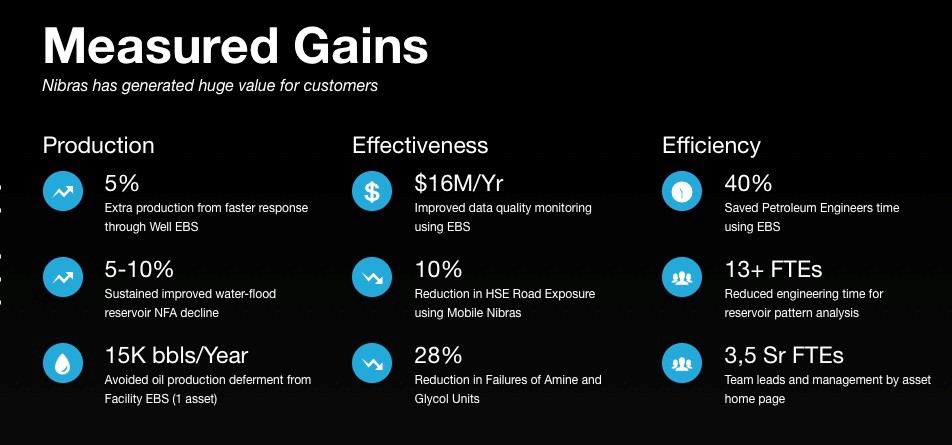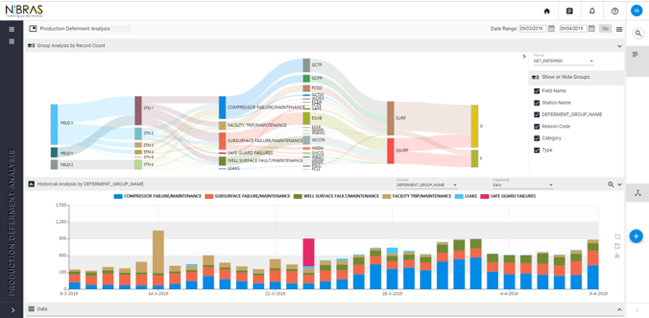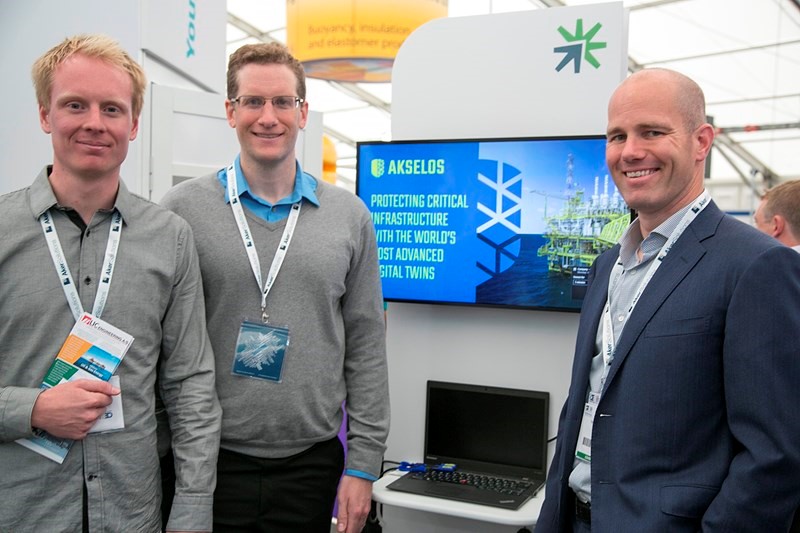Omani EBS platform sets its sights on expansion
April 10, 2019
The Sultanate of Oman has one of the most complex hydrocarbons geologies in the world, something that has forced the Gulf state to become a pioneer in enhanced oil recovery (EOR) techniques. These have helped arrest a precipitous decline in oil production, which saw annual liquids output slip from 972,000 b/d in 2000 to just 715,000 b/d by 2007. The success of the EOR strategy is seen in the resurgence of Omani production since then. In January 2019 it averaged 970,000 b/d, with state-owned Petroleum Development Oman (PDO) responsible for about two-thirds of that output.
PDO has made a name for itself in developing in-house technologies to deal with the challenging geology. One such is the Nibras digital oilfield platform, a digital transformation solution designed to help oil and gas companies manage their assets optimally. Built with an open architecture to connect to corporate databases, the system employs exception-based surveillance (EBS) to automatically detect deviations in asset performance from optimal conditions, and flag them up to the right users, at the right time in the right way.
The system provides the user with automated workflows guided by expert advice to ensure that assets are brought back to optimal operating conditions in a fraction of the time it used to take before Nibras.
Now iNNOVATEQ, a new Omani technology company, will commercialise and enhance the Nibras platform.
With the support of PDO and the government of Oman, iNNOVATEQ was established in 2017 to commercialize Nibras. The idea germinated out of PDO’s reputation for excellence in E&P, iNNOVATEQ Chief Executive Officer Dr Riyadh Moosa told Upstream Intelligence. “The intent was to expand the in-country value generated from oil and gas in Oman beyond E&P and to expand it to services; where a lot of innovations were created, but PDO had no channel to commercialize them.”
Nibras was specifically designed to facilitate the management of assets more efficiently by providing historical and real-time data of the assets. This allows its customers to monitor the performance of their oil and gas assets, including the status and functionality of wells, reservoirs and surface facilities; presenting its findings through intuitive dashboards.
In doing so, explained Moosa, the platform allows for easy identification of operational issues, opportunities for production increase, as well as, significant savings both in terms of cost and time, freeing up staff to focus on more value adding tasks.
Labour of passion
Moosa, a former PDO employee, describes the Nibras project as a ‘labour of passion’. Its origins go back to the 2006-2007 period. “Almost 12 years ago I was in charge of 40 wells at an asset in Oman held by PDO. It would typically take me about 10 minutes per well to check the data, which was a waste of time because 85% of the time, these wells would have performed perfectly OK.”
Moosa got around this problem by creating a spreadsheet. “We went and grabbed the data for every well in one line per well, and then expanded this from 40 wells to more than 400 wells. The sheet introduced the concept of EBS in PDO: saving the team from having to monitor each well individually, to focus only on a handful of wells, highlighted by the sheet, as having ‘potential’ issues or opportunities. Just doing that in one excel spreadsheet was able to save 1 man-week per month of Petroleum Engineers’ time and generate an extra 1% in oil production,” he said.
From this, Moosa and his colleagues went out to find a web-based platform, and when they couldn’t find a suitable one for their needs, decided to develop an in-house PDO solution — Nibras. The first version was rolled out in 2010 and was essentially designed by the SMEs (Subject Matter Experts) of the two dominant well-types in PDO.
Two years after the launch of Nibras 1.0 (2012) was when he got his first digitalization-related shock. “We realised that although we had a very user-friendly, technically-robust web-based solution, no one-was using it,” said Moosa. ”So we switched gears, and using Lean methodology, we figured out who really is the customer. It wasn’t the managers nor the experts but the guys who actually run the wells day in, day out. We needed to be clear what was in it for them. Once that was made crystal clear, they were on board.”
In 2013, Nibras 2.0 the “Lean-version” was released. It was built with the users’ needs and views from the outset, and only cross checked with the experts on the EBS Logic. Within five months, usage had dramatically increased from 65 to 350 users. “We cracked one of the biggest challenges with digitalisation, which is user adoption,” said Moosa.
Nibras 3.0 (2015) expanded the Lean-EBS methodology to the management of all 12 well types in PDO and beyond that to reservoir management and surface facilities management. Once this was completed, users found that EBS and Automation simplified their work significantly and freed up their time to do more value adding things. “They had 40% more time on their hands. We found that user time liberation is the key to user adoption,” said Moosa.
All along, Moosa’s approach was proactive – making sure that value was added from the user’s perspective. “It’s like the old adage from the movie Field of Dreams. If you build it, they will come…”. He added that “once you build the solution their way, the users will come to use it, and with that comes huge value. Over the last five years we have grown by 250 users per year reaching 1,800 today. This has resulted in generating 5% extra production from PDO assets.”
PDO’s implementation of Nibras now covers 8,000 wells, 75% of its water-flooded reservoirs and 25% of its surface equipment. And now that users trust the system, iNNOVATEQ is moving towards more advanced solutions.
Moosa is clear-eyed about the future challenges. “Everyone’s taking about advanced analytics, but in reality, the challenges you face is organisational adoption, users’ adoption and then technology.
Future refinements of Nibras will include increased mobility, cloud computing, and advanced (but practical) analytics whether built within Nibras or by connecting to 3rd party analytical engines.
Nibras is an ever-evolving platform, noted Moosa. Work is currently underway on the fourth generation of the platform which features significant technology upgrades, superior functionality and enhanced user experience. Nibras 4.0 is also designed to enable the platform to move from an in-house PDO solution to a commercial offering that can be deployed to other clients.
Fast-track
iNNOVATEQ will offer its clients the culmination of a decade of experience in PDO: achieving true business transformation through digital transformation. “We went through a 10-year journey with Nibras in PDO, where we made a lot of mistakes and hit a number of dead ends. Through iNNOVATEQ we can now help other oil & gas companies avoid these pitfalls and fast- track their own digital transformation,” said Moosa.
To that end, iNNOVATEQ is in the last testing stages prior to releasing its latest version in Q2 2019. “With Nibras 4.0 we will offer our clients’ bite-size apps that they can select from our new app store. This way our clients can select how big or small they want to start and how fast they want to grow”. He added that “for a sustainable deployment, we have learned that you are better off starting small, to allow your organization to adapt and adopt, and then grow fast”.

Source: iNNOVATEQ
The sustainability of the solution is the next huge challenge. For user adoption you have to allow the users to design the solution. However, as you scale-up to multiple assets and disciplines you could easily end-up with multiple versions of your digital solution to satisfy the different user communities. “That quickly becomes unmanageable and unsustainable. It took us a while to figure this one out,” said Moosa. “But again, the solution came from Lean. We created a simple and standard approach and framework that we used for all EBS implementations in Nibras which were customized by each user community for them to feel it’s theirs”.
He added: “This is not easy, and required a lot of discipline, but the end result is that in Nibras now, all asset types (whether an ESP well or a steam-Injection well, or even a water-flooded reservoir pattern or a gas-turbine compressor) are managed in the identical standard way, with the same standard four-step expert-guided workflow, identical-looking diagnostics page and identical management dash-boards for all.
Even with that, iNNOVATEQ needed to ensure that the platform and the Nibras development team had to be very agile: to be able to cater for the needs of the ever growing user base and their need to tweak the implementation; as physical conditions, their understanding and/or business priorities changed.
“In Nibras 4.0 we have taken solution agility many steps further. We have created an EBS-Builder, a Workflow-Builder and a Form-Builder that will enable super-users to make tweaks on the implemented solution themselves, without needing iNNOVATEQ or IT personnel,” said Moosa.
The Nibras journey has been long and winding, but ultimately very productive. “We went through a 10-year journey with Nibras, but now we are entering a new era of growth in and outside of PDO,” said Moosa “Our aspiration is for Nibras to become an industry standard for Digitalization in oil & gas. We have experienced first-hand in PDO how digitalization can energize the organization and unlocked tremendous value, and we want to help the rest of the industry achieve the same. We want to make oil & gas disrupt itself from within.”

Well Production Testing Compliance (N4) enables asset teams to evaluate the health of their asset's production testing
Upstream Intelligence is a trading name of FC Business Intelligence Ltd.
Registered in England and Wales no.4388971. Registered address 7-9 Fashion Street, London, E1 6PX,
UK |
Related Articles
Tech accelerator gives funding lift to digital pioneers

